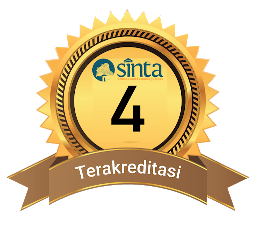The Effect Of The Cinqase Learning Model On Critical Thinking Abilities And Understanding of Acid-Base Titration Concepts
DOI:
10.29303/cep.v8i1.8743Published:
2025-05-31Issue:
Vol. 8 No. 1 (2025): Edisi MeiKeywords:
CINQASE learning model, Critical Thinking Skills, conceptual understanding, acid-base titrationArticles
Downloads
How to Cite
Abstract
This study aims to reveal the effect of the CINQASE learning model on critical thinking skills and students' conceptual understanding of acid-base titration material at SMAN 6 Mataram. This study is a quantitative study with a quasi-experimental method. The population in this study were students of Phase F Class XI SMAN 6 Mataram. The research sample was taken using the cluster random sampling technique and obtained students of class XI 4 as the control class and students of class XI 3 as the experimental class. The research instrument in measuring critical thinking skills and conceptual understanding was in the form of 5 test questions that had been tested for validity and reliability. The results of the N-Gain values obtained from the experimental class and the control class were analyzed by testing the normality of the N-Gain and homogeneity of the N-Gain first and then testing the hypothesis. Hypothesis testing was carried out using the t-test. The results showed that there was an effect of the CINQASE learning model on students' critical thinking skills and conceptual understanding of acid-base titration material with a significance value of t count > t table. Student responses to the CINQASE model also showed positive results. In conclusion, the CINQASE learning model is effectively applied in chemistry learning to improve critical thinking skills and conceptual understanding.
References
Arisanti W. O. L., Supandi W., & Widodo A. (2019). Analisis penguasaan konsep dan keterampilan berpikir kreatif siswa sd melalui project based learning. Jurnal Pendidikan Dasar, 8(1). 1-10.
Hunaidah, M., Susantini, E., & Wasis. (2018). Validitas model pembelajaran CINQASE untuk meningkatkan keterampilan individual critical thinking (INCT) dan collaborative critical thinking (CCT). Seminar Nasional Fisika 2018 Program Pascasarjana Universitas Makasar, 1(1). 1-4.
Hunaidah, M., Susantini, E., Wasis, & Mahdiannur, M. A. (2022). Model pembelajaran CINQASE (collaboration in questioning, analyzing, synthesizing, and evaluating). Surabaya: CV Global Aksara Pers.
Hunaidah, Sahara, L. Husein, & Mongkito V. H. R. (2022). Pengembangan e-modul pembelajaran CINQASE berbasis flip pdf professional untuk meningkatkan hasil belajar fisika peserta didik. Jurnal Dedikasi Pendidikan, 6(1). 137-150.
Hutabarat, H., Elindra, R., & Harahap, M. S. (2022). Analisis penerapan kurikulum merdeka belajar di SMA negeri sekota padang sidimpuan. Jurnal MathEdu (Mathematic Education Journal), 5(3). 58-69.
Setyosari, H. P. (2016). Metode penelitian pendidikan dan pengembangan. Jakarta: Kencana Prenadamedia Group.
Wulandari, R., & Anita, A. (2019). Model Pembelajaran Collaborative Learning Untuk Mendorong Keterampilan Berpikir Kritis Peserta Didik Di Abad 21.Yogyakarta: UNY Press.
Author Biographies
Ida Ayu Ketut Purnama Dewi, Universitas Mataram
Jeckson Siahaan, Mataram University
Muntari Muntari, Mataram University
License
Copyright (c) 2025 Ida Ayu Ketut Purnama Dewi, Jeckson Siahaan, Muntari Muntari

This work is licensed under a Creative Commons Attribution-ShareAlike 4.0 International License.
Authors who publish with Chemistry Education Practice agree to the following terms:
- Authors retain copyright and grant the journal right of first publication with the work simultaneously licensed under a Creative Commons Attribution License 4.0 International License (CC-BY-SA License). This license allows authors to use all articles, data sets, graphics, and appendices in data mining applications, search engines, web sites, blogs, and other platforms by providing an appropriate reference. The journal allows the author(s) to hold the copyright without restrictions and will retain publishing rights without restrictions.
- Authors are able to enter into separate, additional contractual arrangements for the non-exclusive distribution of the journal's published version of the work (e.g., post it to an institutional repository or publish it in a book), with an acknowledgement of its initial publication in Chemistry Education Practice.
- Authors are permitted and encouraged to post their work online (e.g., in institutional repositories or on their website) prior to and during the submission process, as it can lead to productive exchanges, as well as earlier and greater citation of published work (See The Effect of Open Access).






